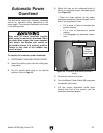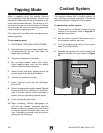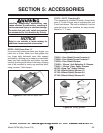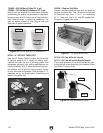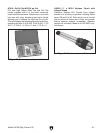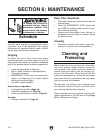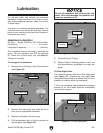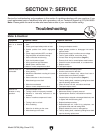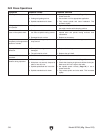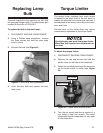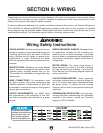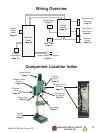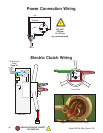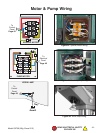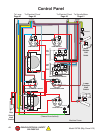
Model G0756 (Mfg. Since 2/13)
-35-
Review the troubleshooting and procedures in this section if a problem develops with your machine. If you
need replacement parts or additional help with a procedure, call our Technical Support at (570) 546-9663.
Note: Please gather the serial number and manufacture date of your machine before calling.
SECTION 7: SERVICE
Troubleshooting
Motor & Electrical
Symptom Possible Cause Possible Solution
Machine does not
start or a breaker
trips
1. Emergency stop push-button engaged/at
fault.
2. Chuck guard open/safety switch at fault.
3. Spindle position limit switch engaged/at
fault.
4. Power supply switched OFF or at fault.
5. Plug/receptacle at fault/wired wrong.
6. Motor connection wired wrong.
7. Wall circuit breaker tripped.
8. Wiring open/has high resistance.
9. Master power switch at fault.
10. Motor or motor components at fault.
1. Rotate button to reset/replace it.
2. Close guard/replace switch.
3. Adjust spindle position to disengage limit switch;
replace switch.
4. Ensure power supply is on/has correct voltage.
5. Test for good contacts; correct the wiring.
6. Correct motor wiring connections (Page 41).
7. Ensure circuit size is correct/replace weak breaker.
8. Check/fix broken, disconnected, or corroded wires.
9. Replace switch.
10. Test/repair/replace.
Machine stalls or is
overloaded.
1. Feed rate/cutting speed too fast.
2. Wrong tooling.
3. Machine is undersized or tooling is incorrect
for the task.
4. Motor connection is wired incorrectly.
5. Motor bearings are at fault.
6. Motor has overheated.
7. Motor or motor components at fault.
1. Decrease feed rate/cutting speed.
2. Use the correct tool for the task.
3. Use smaller or sharper tool; reduce feed rate or
spindle speed; use coolant if possible.
4. Correct motor wiring connections (Page 41).
5. Test by rotating shaft; rotational grinding/loose shaft
requires bearing replacement.
6. Clean off motor, let cool, and reduce workload.
7. Test/repair/replace motor.
Machine has
vibration or noisy
operation.
1. Excessive depth of cut.
2. Tooling is loose or improperly installed.
3. Machine is incorrectly anchored or sits
unevenly.
4. Motor or machine component is loose.
5. Tooling is dull or at fault.
6. Bit is chattering.
7. Motor fan is rubbing on fan cover.
8. Motor bearings are at fault.
1. Decrease depth of cut.
2. Make sure tooling is properly secured.
3. Tighten/replace anchors; relocate/shim machine.
4. Inspect/replace stripped or damaged bolts/nuts, and
re-tighten with thread locking fluid.
5. Replace/resharpen tooling.
6. Replace/sharpen bit; index bit to workpiece; use
appropriate feed rate and cutting RPM.
7. Replace dented fan cover or damaged fan.
8. Test by rotating shaft; rotational grinding/loose shaft
requires bearing replacement.



